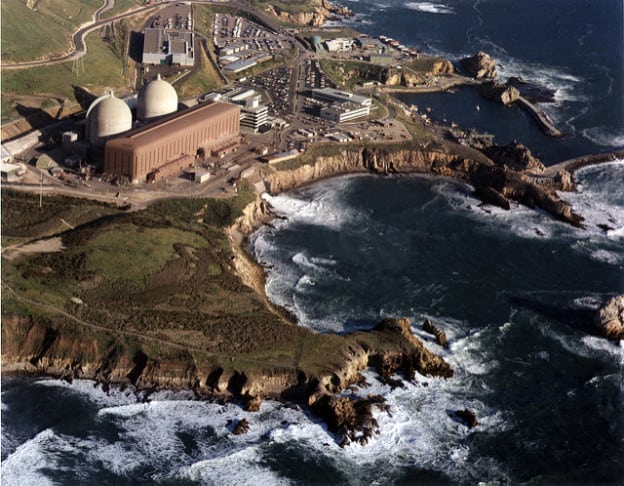Even California’s Governor Realizes Nuclear Power Is Key to a Clean Energy Future
Credit to Author: POWER| Date: Mon, 01 Aug 2022 04:11:44 +0000

California in the not-so-distant past was a consistent top 10 state for nuclear power in terms of net generation. It was even known as “a pioneer in harnessing nuclear energy.” Today, though, the state has but one remaining site for generating atomic energy, the Diablo Canyon Nuclear Power Plant in San Luis Obispo County—a facility scheduled to be shut down in 2025. Diablo Canyon produces a significant amount of energy, from 6% to 9% of California’s electricity, and 15% of the state’s carbon-free power.
It might be granted a stay of execution. California Gov. Gavin Newsom earlier this year said the state will pursue funds from a $6 billion federal program designed to keep open nuclear plants across the country that are “at risk for early closure.”
COMMENTARY
Newsom, at the time noting a May 19 deadline to submit an application, said his office did not want to “miss the opportunity to draw down any federal funds if you want to extend the life of that plant. We would be remiss not to put that on the table as an option.”
Diablo Canyon won’t be receiving a full pardon. The governor’s office told the Los Angeles Times that Newsom still wants it eventually closed. Yet, a reprieve of only a few years is noteworthy: It’s an admission that policymakers’ drive to shut down all power generation in the state except for wind, solar, and maybe some small hydro by 2045 is far too ambitious and is likely to result in energy shortfalls. Media reports in recent years have noted “concerns about system reliability,” particularly due to rolling blackouts during summer heatwaves.
Nothing has improved in recent months to inspire confidence in the ongoing power generation conversion in a state that imports more electricity, about 30% of its consumption, than any other. In early May, energy officials “issued a sober forecast for the state’s electrical grid,” Reuters reported, citing a lack of “sufficient capacity to keep the lights on this summer and beyond if heatwaves, wildfires or other extreme events take their toll.” A few days later, Newsom further acknowledged that the 2045 deadline is unrealistic when he asked for $5 billion from the 2022–2023 budget to shore up the state’s electrical grid. Energy reliability, he confessed (probably inadvertently), is “an endless struggle” in California.
As officials have wrestled with questions regarding reliability, they have had to resort to actions they weren’t comfortable with but that were nevertheless necessary, going “back to the future” by relying on the conventional means of power production that they’ve been working so diligently to zero out. Regulators had little choice but to delay the closures of a number of natural gas–fired generating stations, including in Redondo Beach, where the AES facility was scheduled to close at the end of 2020, the second extension for that site, and in Alamitos, Huntington Beach, and Ormond Beach. Those last three were granted extensions in 2020 after the California Independent System Operator (CAISO) warned that future summer heat was going to strain the system.
In another effort to “avoid power shortages and outages,” the Department of Water Resources (DWR) last fall placed four temporary natural gas mobile emergency power generating units online “to support California’s energy grid in times of extreme stress on the grid.” This was about two months after Newsom’s administration directed DWR to work with the California Energy Commission (CEC) to “develop additional energy capacity to safeguard the state’s grid from the impacts of climate-induced drought, wildfires, and extreme heatwaves.”
Adding to the challenges that California must overcome if it’s to drop fossil fuel use is a growing energy storage dilemma. The state “is racing to add batteries to its electric grid in an attempt to prevent blackouts, cut greenhouse gas emissions and prepare for the closure of the state’s only nuclear power plant in 2025,” said E&E News, “but can’t find parts.” California’s plans are tightly handcuffed by the “demand for raw materials used in lithium-ion batteries, which account for the vast majority of utility-scale projects.” That demand simply outstrips supply.
A little more than a year ago, the CEC, the California Public Utilities Commission, and the California Air Resources Board released a report charting the path to 100% clean power. It warned that “solar and wind build rates need to nearly triple” while “battery storage build rates need to increase by nearly eightfold,” if the state is to decarbonize as planned. The likelihood of this happening is so low that it’s almost impossible. Mark P. Mills, who’s written extensively about transitioning to renewables for the Manhattan Institute, has pointed out that “sometimes, the old or established technology is the optimal solution and nearly immune to disruption.” The wall that battery technology has hit, as well as a profound scarcity of natural resources needed to produce batteries, create what we can call “the great battery hurdle.”
If officials were realists rather than dreamers, narrative-shapers, and virtue-signalers, they would be replacing conventional energy sources with nuclear rather than making wind and solar promises they can’t keep. Unless they wake up soon to their miscalculations, they’re going to cost Californians not for years but decades.
—Kerry Jackson is a fellow with the Center for California Reform at the Pacific Research Institute. This article is one of two posts in POWER’s Point-Counterpoint series. The views and opinions expressed within the content are those of the author(s) and do not necessarily reflect the views and opinions of POWER or any of its affiliates. To read the opposing viewpoint, please see: “Keeping Diablo Canyon Running Past 2025 is Not the Answer to California’s Energy Future.”
The post Even California’s Governor Realizes Nuclear Power Is Key to a Clean Energy Future appeared first on POWER Magazine.